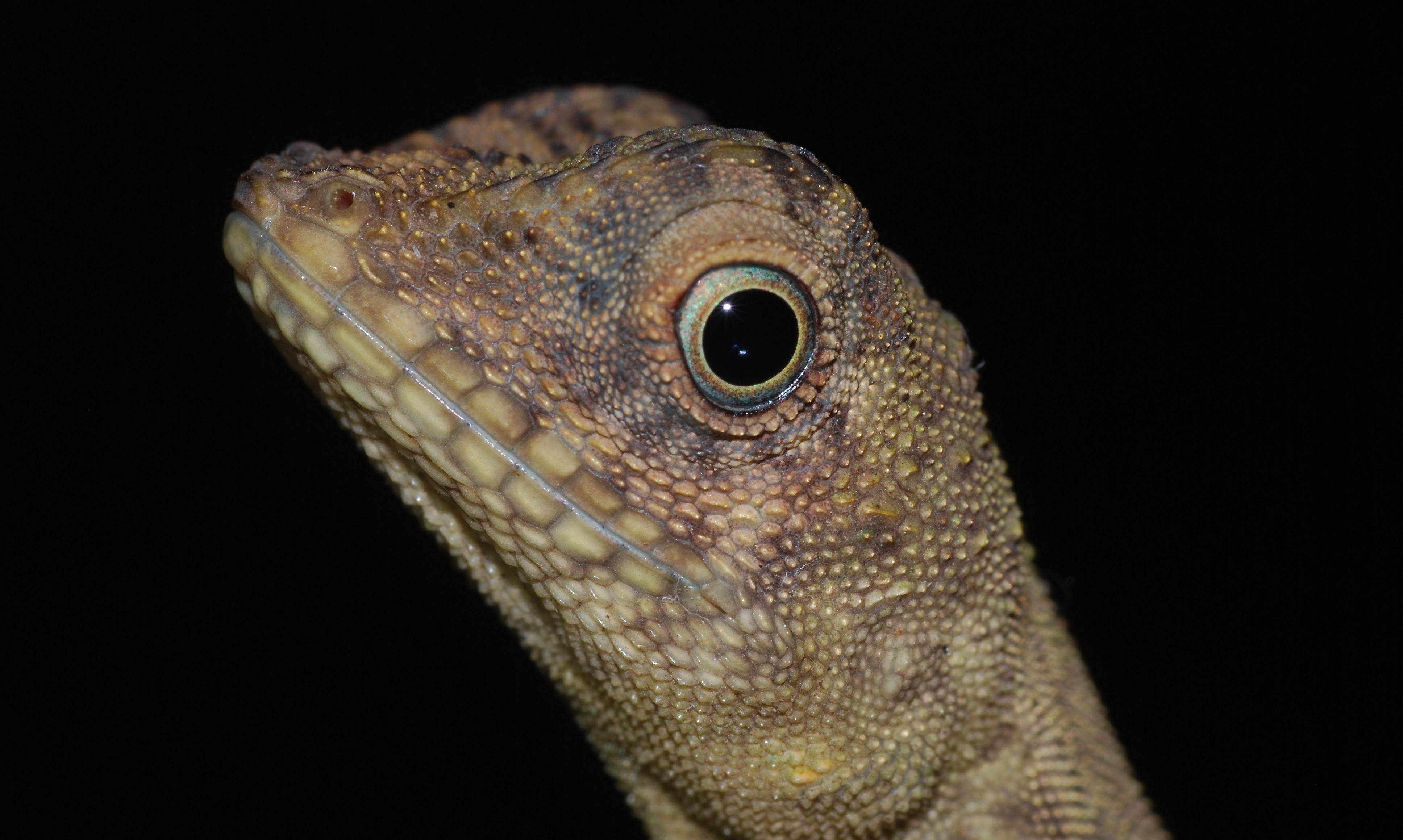| Citation |
|
Description |
Geographic Range [top]
Range Description: This species inhabits Thailand, Peninsular Malaysia and Tioman Island, Singapore (Chan-ard et al. 1999), the Seribuat Archipelago (Grismer et al. 2006), and Sarawak (Malkmus et al. 2002). It is also found from Sabah (East Malaysia) (Manthey 2008). It may also be found in Indonesia on Simalur, Nias, Sumatra, Singkep, Kalimantan and Natuna Island (Uetz 2006, M. Auliya pers. comm. 2010).
Countries occurrence:
Native:
Indonesia; Malaysia; Singapore; Thailand
Additional data:
Range Map: Click here to open the map viewer and explore range.
Population [top]
Population: In the Seribuat Archipelago, this species occurs in unusually high densities on the islands of Babi Besar, Babi Tengah, Babi Hujong and Aceh (Grismer et al. 2006). It inhabits similar habitats to smaller Draco species, so the absence of D. melanopogon from the interior of these islands may be caused by competitive exclusion (Grismer et al. 2006). Generally, where A. fusca does occur sympatrically with any of the other smaller Draco spp. (i.e. Tioman, Tinggi, Sibu), it occurs in much lower densities (Grismer et al. 2006). In the forested lowlands of peninsular Malaysia, as well as the suburbs of Kuala Lumpur, the species seems to be relatively common (M. Auliya pers. comm.).
Current Population Trend: Unknown
Additional data:
? Population severely fragmented: No
Habitat and Ecology [top]
Habitat and Ecology: Members of the genus Aphaniotis are known to be tree- and bush-dwellers, in primary lowland moist forests and hilly regions in the general vicinity of running water (Malkmus et al. 2002). Grismer et al. (2006) state that this species is an arboreal, diurnal lizard commonly found in undisturbed closed canopy forests, where it perches on the sides of trees and vines.
Systems: Terrestrial
Threats [top]
Major Threat(s): The extent of impact of threat process on this species are not well understood. As it is a primary forest dweller, this species is likely impacted by habitat degradation due to human-driven deforestation, as a result of deforestation in parts of it range which occurs in a region where lowland forest is retreating very fast, especially due to oil palm plantations. More than 75% of forest in tropical Asia, the Philippine archipelago, Indochina, Malay Peninsula, India, Java, and Lesser Sundas has been deforested. Over half the forest cover remains in Borneo, Sumatra, Sulawesi, and New Guinea, however, they are experiencing rapid conversion (Laurance 1999).
Conservation Actions [top]
Conservation Actions: There are no known species-specific conservation measures in place for this species, though it may occur in protected areas within its range. Further research on population numbers and habitat should be carried out and its population and habitat trends should be monitored.
Citation: Auliya, M.,Inger, R.F., & Manthey, U. 2010. Aphaniotis fusca. The IUCN Red List of Threatened Species 2010: e.T170375A6771849. http://dx.doi.org/10.2305/IUCN.UK.2010-4.RLTS.T170375A6771849.en. Downloaded on 13 March 2017.
Disclaimer: To make use of this information, please check the .
Feedback: If you see any errors or have any questions or suggestions on what is shown on this page, please provide us with feedback so that we can correct or extend the information provided
|

